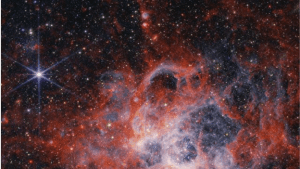INTRA-GROUP CASTE VARIANCES, EQUALITY, AND THE COURT’S GAZE
THE CONTEXT: The Supreme Court of India will soon decide on the constitutionality of sub-classification within the SCs and STs for public employment reservations. This decision will have far-reaching implications for affirmative action and the reservation system in India. It is important to consider historical context, legal precedents, and constitutional provisions that govern reservations and equality in India.
THE ISSUES:
- Sub-Classification in SC/ST Reservations: The core issue is whether state governments can create sub-classifications within the SC and ST reservations to address intra-group variances in backwardness and discrimination. This question arises from the observation that not all castes within the SC and ST categories are equally backward.
- 1975 Punjab Circular: In 1975, the Government of Punjab issued a circular reserving 50% of the SC quota for Balmikis and Mazhabi Sikhs. This attempted to address intra-group disparities, but it was struck down following the Supreme Court’s judgment in V. Chinnaiah vs. State of Andhra Pradesh, which held that state governments could not alter the Presidential list of SCs as per Article 341 of the Constitution.
- V. Chinnaiah vs State of Andhra Pradesh (2004): A five-judge bench ruled that the Andhra Pradesh Scheduled Castes (Rationalisation of Reservations) Act, 2000, which created sub-categories within the SC list, was unconstitutional as it violated Article 341. This judgment emphasized that only Parliament has the authority to modify the list of SCs.
- Indra Sawhney vs Union of India: This case allowed for sub-classifications within the Other Backward Classes (OBCs) for government services, suggesting a precedent for recognizing varying levels of backwardness within broad reservation categories.
- Constitutional Provisions: Article 341 allows the President to specify SCs in various states, which can only be altered by Parliament. Articles 14 to 16 emphasize the Constitution’s commitment to equality, allowing reservations to achieve substantive equality by addressing historical discrimination against certain groups.
- Theoretical and Legal Implications: The Supreme Court’s upcoming judgment in Davinder Singh is expected to address the constitutional validity of sub-classification within SC/ST reservations, potentially reconciling the need for targeted affirmative action with the constitutional framework. This decision could have profound implications for the future of reservation policies in India, especially in how they address intra-group disparities and work towards achieving substantive equality.
THE WAY FORWARD:
- Clarification and Expansion by the Supreme Court: The Supreme Court, through its judgment in State of Punjab vs. Davinder Singh, could provide a clear, expanded interpretation of Articles 14-16 and Article 341, allowing for a nuanced understanding that accommodates sub-classifications within SCs and STs, provided they aim to achieve the true essence of equality and social justice.
- Constitutional Amendment: If the legal framework as it currently stands is too rigid to allow for necessary sub-classifications, a constitutional amendment could be proposed to permit such measures explicitly. This would require a broad consensus among lawmakers and must be approached sensitively to the wider implications for the reservation system.
- Comprehensive Data Collection and Studies: The government and independent constitutional bodies should undertake extensive research and data collection to assess the varying levels of backwardness within SCs, STs, and OBCs. These studies would provide an empirical basis for sub-classifications, ensuring that reservations are allocated more effectively and equitably.
- Policy Formulation Based on Empirical Evidence: Governments at the state and central levels should formulate policies based on empirical evidence collected through studies. These policies must close the gap between different sub-groups within the SC and ST categories, ensuring that affirmative action reaches those most in need.
- Regular Review and Dynamic Adjustments: The reservation policies should not be static. Regular reviews and dynamic adjustments, based on changing socio-economic realities and the success of affirmative action programs, could help make these policies more effective. This approach would require a robust mechanism for monitoring and evaluation.
- Strengthening Educational and Economic Support Programs: Beyond reservations in public employment and education, strengthening support programs to improve the educational and economic status of the most backward within SCs and STs can be a complementary approach to ensure overall upliftment.
THE CONCLUSION:
To create a more equitable society, the infrastructure of opportunity, particularly in education and employment, needs to be reformed. This includes fixing government schools, attracting new financing for skills development, and cutting regulatory cholesterol for employers to encourage job creation. The impact of reservation policies on societal development should be analyzed, focusing on promoting Antyodaya (welfare of the weak) and Sarvodaya (development of all), as envisioned by Mahatma Gandhi.
UPSC PAST YEAR QUESTIONS:
Q.1) Whether the National Commission for Scheduled Castes (NCSCJ) can enforce the implementation of constitutional reservation for the Scheduled Castes in the religious minority institutions? Examine. (2018)
Q.2) Development and welfare schemes for the vulnerable, by their nature, are discriminatory in approach. Do you agree? Give reasons for your answer. (2023)
MAINS PRACTICE QUESTION:
Q.1)Analyze the debate surrounding the sub-classification within Scheduled Castes (SCs) and Scheduled Tribes (STs) in the context of affirmative action and reservation policies in India.
SOURCE:
